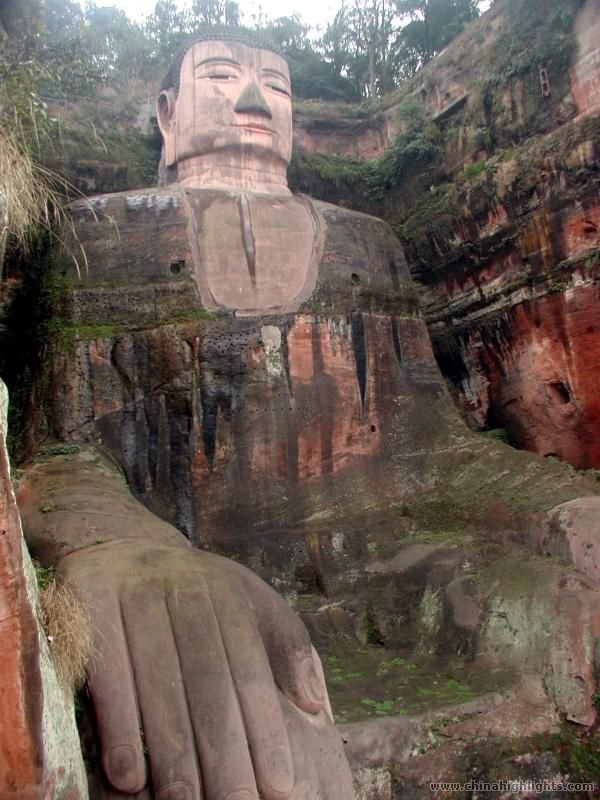Note: this post is a few days late. I am leaving early due to family matters,
so I will not be going to Kangding. Just another reason to return to China, I
suppose!
After 5 days of
moving bricks, breaking up clay, securing rebar, bricklaying, and various other
tasks, our time in Mayan Village has finally come to an end. To say we had a
good time would be an understatement – although it was hot (95 degrees), humid,
and hard work, I think it’s safe to say that we all learned quite a bit about
life in rural China. The work ethic of the people we worked with put us all to
shame. There were a couple of workers whom I remember with particular fondness:
Li Shifu ("master" - a term of respect), one of the lead bricklayers. He didn’t say much, but patiently showed
us how to spread the mortar so that the bricks would lay level. Wang Shifu (pictured
below) was one of the most hardworking people on the site. He pushed countless
wheelbarrows full of sand, mortar, and concrete back and forth for hours at a
time. Not too shabby for someone who’s 66. I caught him on one of his rare
smoke breaks; I asked him if he was from Mayan (yes) and if he was moving into
one of the houses when they were completed (he was). I then asked him how to
say “pipe” in Chinese, and he thought I was asking him if I could have a smoke
on his pipe, which he happily offered. I smiled and politely refused. The Sichuan accent is pretty thick in these parts, so much so that it's almost a separate language from Mandarin.
One of the most memorable experiences was a hike up the
mountain behind the village. We stopped work early and headed up a steep and
muddy path. As usual, it was sweltering, but the canopy of bamboo leaves
provided relief from the hot sun. Chloe told us that the people who lived on
the mountain took this path everyday to get into the village – about 3 km. We
encountered a few other people on the trail, one of whom was carrying a
birthday cake for his grandmother, who lived at the top of the mountain. Today
was her 83rd birthday. This grandmother was the same person we were
intending to pay a call on; she, like many people living on the mountain, had
opted to relocate to one the houses we were helping to build. Her old home had
been destroyed in a landslide, and she was now living with her daughter at the
top of the mountain. They were waiting for the houses to be completed.
After 40 minutes of steady climbing, we finally reached the
top of the mountain and Grandmother’s house. She was delighted to have so many
visitors (15 of us), and invited us to have a seat on her front porch. After
chatting with her for a few minutes, she told us to have a look around at the
neighboring houses, now abandoned; the former occupants had left to live down
in the valley.
It was like walking into a ghost town. Chairs, washbasins,
shoes, and various other items lay forgotten in the vacant courtyards. Small
saplings had taken root in the tiled roofs, as nature slowly reclaimed what had
always been hers. Chloe said that some of these homes were more than 100 years
old. The path continued on – a remnant of the ancient Tea Horse Road, which
stretched over 2,500 miles from Tibet to Nanjing. Standing on the path, I tried
to imagine how many feet, how many hooves, had passed through here over that
past 1000 years, laden with bricks of tea and bags of salt. It occurred to me
that the people who once lived here must have left with heavy hearts as they
said goodbye to their ancestral homes. I hoped that their new homes in the
valley would be imbued with the same warmth and spirit that must have once
filled these houses.
I come away from my time in Mayan and China with a better
appreciation of how difficult life can be for people living in potentially
hazardous areas. In rural, mountainous Sichuan, earthquakes and landslides are a
constant danger. Habitat for Humanity China’s mission is to provide people
living in these areas with a viable, safer housing alternative that allows
people to stay in their home villages. With 150 houses under construction and
accommodation for over 1000 people, the people of Mayan have embraced
the opportunity to rebuild their village. As for our group, we bonded over long
hours of passing bricks, strange cuisine (to us, at least), and the
appreciation that we were contributing – albeit in a small way – to fulfilling
a global vision of providing people with a “simple, decent place to live”. We
were only in Mayan there for a week; but we left with a lifetime full of
memories.
I hope to include another post or two about my post-build experiences within the next week. I do want to express my gratitude to everyone who has supported me on this trip - financially, morally, and spiritually. I had a lot of time while passing bricks back and forth to reflect on how fortunate I am to have such wonderful friends and family. You all are wonderful. Thank you.
Our plans for the week
Almost to Grandmother's house
Grandmother and her family
Abandoned house
The ancient Tea Horse Road
Sign for Mayan Village
Me, Erin, and our fearless team leader, Val
My amateurish attempt at bricklaying
Our group and some Chinese high school students and their teachers
Wang Shifu






























